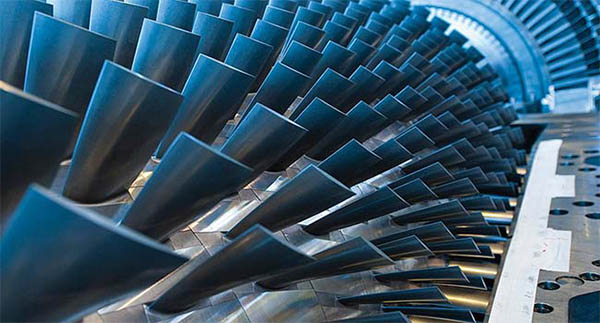“Why is rotor maintenance important to the safe operation of my power plant?”
“What factors impact my rotor?”
Over the years, these are just some of questions I’ve been asked about rotors by people in the power industry, and I thought I would share some insights.
I am privileged to work on a technology marvel that is responsible for over 220,000 MW of power worldwide. There are more than 1400 F-class gas turbines running in the world. Over the last two decades, I’ve been immersed in continuously improving the efficiency, reliability, and emissions of these gas turbines. It’s still amazing to me that thousands of parts come together and transfer natural gas into electricity that powers so many of our homes and businesses across the world.
The F-class gas turbine rotor comes together with tolerances within millimeters. It spins at a rate of 3600 RPMs which is 60 revolutions per second. At their hottest, temperatures around the rotor can reach 2000 to 3000 degrees Fahrenheit, which would melt most commercial metals on Earth.

In the F-class rotor there are 18 steel rotating wheels in the compressor (or front) section that hold in hundreds of precision steel blades. Three nickel alloy wheels along with a few spacers make up the turbine (or back-end) section. The connections between the compressor, turbine and generator sections are critical safety aspects of the system. It is bolted together through the center by specially-stretched tie bolts. There is a compressor forward stub shaft that is connected to the generator through the load coupling. The distance piece and compressor aft shaft hold the compressor and turbine sections together.
The F-class rotor architecture has the capability for a long operating life when following recommended maintenance activities. With proper care and maintenance, a rotor can run over 15 years or 144,000 factored fired hours (FFH) and 5,000 factored fired starts (FFS)! There are hundreds of patents and trade secrets that contribute to the improvements made to the rotors over the years.
Over the last three decades, there have been a series of rotor updates that significantly improved performance and reliability. One of my roles at GE Vernova is to carefully manage the proper maintenance path for our customers to apply the correct rotor updates. With the product and applications engineers, I choose the subset of rotor updates that is compatible with each generation of our F-class architecture. I am proud of the hundreds of changes we have made to improve the equipment and am excited when our combination of technology updates helps a customer. Each customer values different performance attributes. For some it’s full load efficiency and additional power output. For others it is part load efficiency and faster start capability
So what factors determine a rotor life management plan? Most plant or asset managers look at the unit’s operating mode as well as plant outlook to determine a rotor plan that ensures reliable unit operation. Each plant runs differently. For example, a gas turbine providing power to an industrial application like a water desalination plant may run continuously for about 8,000 hours a year. Some F-class power plants are configured to complement intermittent renewable power and as a result ramp up and down quickly to support grid needs.
The F rotor is complicated and its evolution over the past few decades has been an interesting one. My next blog will discuss the turbine material. It’s a very rare alloy and is critical to maintain safe and reliable operation of an F rotor. Creating the ingot (the raw material that we use to forge the wheel shape) itself is pretty tricky—stay tuned for a closer look!
Want more information on GE's Rotor Life Management program for the 7F fleet? Visit our webpage to learn more!
Contact us

